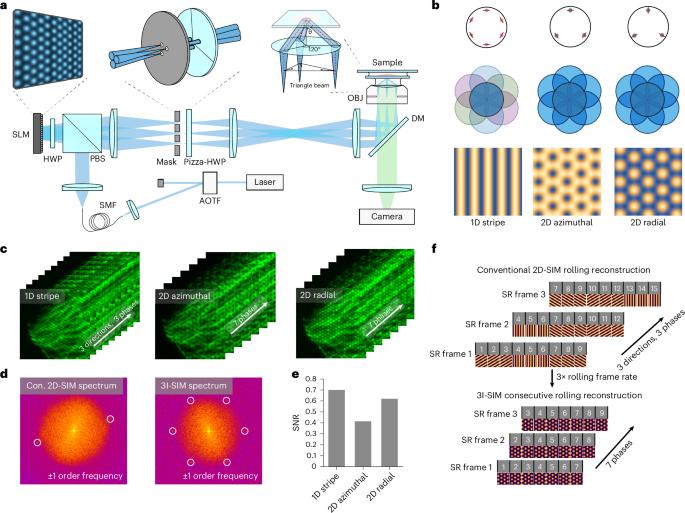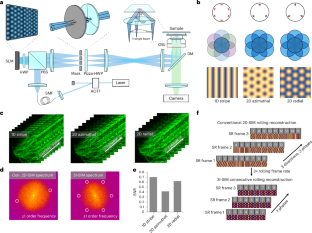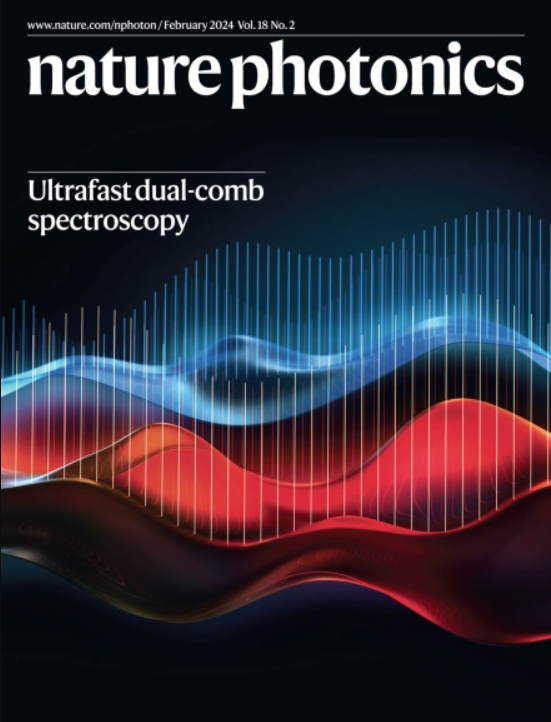Triangle-beam interference structured illumination microscopy
IF 32.9
1区 物理与天体物理
Q1 OPTICS
引用次数: 0
Abstract
Structured illumination microscopy (SIM) is a powerful tool for live-cell super-resolution imaging. Conventional two-dimensional (2D)-SIM uses one-dimensional stripe patterns and rotates them at three angles to achieve uniform resolution. Here, to alleviate photobleaching and improve the temporal resolution of 2D-SIM, we develop triangle-beam interference SIM (3I-SIM), which generates a 2D lattice pattern based on radially polarized beam interference. The radial polarization enhances the signal-to-noise ratio of the high-frequency components. Compared with conventional 2D-SIM, 3I-SIM reduces photobleaching and improves the temporal resolution to 242 Hz. Benefiting from unidirectional phase shift, 3I-SIM provides threefold higher rolling frame rate than conventional 2D-SIM to visualize fast biological dynamics. We further developed 3I-Net, a deep neural network with a co-supervised training scheme, to enhance the performance of 3I-SIM under an extremely low signal intensity. Its higher sensitivity enables the consecutive acquisition of over 100,000 time points at a spatial resolution of 100 nm. We continuously monitor the fine morphological changes in neuronal growth cones for up to 13 h, as well as the transient signals from actin filaments regulating endoplasmic reticulum dynamics. We believe 3I-SIM will offer a suitable platform to study complex and rapid biological processes with high data throughput. Triangle-beam interference structured illumination microscopy leverages radially polarized beams to generate two-dimensional lattice illumination patterns. The technique enables a temporal resolution of 242 Hz, spatial resolution of 100 nm and continuous imaging of neuronal growth for up to 13 h.


三角光束干涉结构照明显微术
结构照明显微镜(SIM)是一种强大的活细胞超分辨率成像工具。传统的二维(2D)-SIM使用一维条纹图案并以三个角度旋转它们以实现均匀分辨率。为了缓解光漂白和提高2D-SIM的时间分辨率,我们开发了三角光束干涉SIM (3I-SIM),它基于径向偏振光束干涉产生二维点阵图。径向极化提高了高频元件的信噪比。与传统2D-SIM相比,3I-SIM减少了光漂白,并将时间分辨率提高到242hz。得益于单向相移,3I-SIM提供了比传统2D-SIM高三倍的滚动帧速率,以可视化快速的生物动力学。我们进一步开发了3I-Net,一种具有共同监督训练方案的深度神经网络,以提高3I-SIM在极低信号强度下的性能。其更高的灵敏度使其能够以100纳米的空间分辨率连续获取超过100,000个时间点。我们连续监测神经元生长锥的精细形态学变化长达13小时,以及肌动蛋白丝调节内质网动力学的瞬态信号。我们相信3I-SIM将提供一个合适的平台,以高数据吞吐量研究复杂和快速的生物过程。
本文章由计算机程序翻译,如有差异,请以英文原文为准。
求助全文
约1分钟内获得全文
求助全文
来源期刊

Nature Photonics
物理-光学
CiteScore
54.20
自引率
1.70%
发文量
158
审稿时长
12 months
期刊介绍:
Nature Photonics is a monthly journal dedicated to the scientific study and application of light, known as Photonics. It publishes top-quality, peer-reviewed research across all areas of light generation, manipulation, and detection.
The journal encompasses research into the fundamental properties of light and its interactions with matter, as well as the latest developments in optoelectronic devices and emerging photonics applications. Topics covered include lasers, LEDs, imaging, detectors, optoelectronic devices, quantum optics, biophotonics, optical data storage, spectroscopy, fiber optics, solar energy, displays, terahertz technology, nonlinear optics, plasmonics, nanophotonics, and X-rays.
In addition to research papers and review articles summarizing scientific findings in optoelectronics, Nature Photonics also features News and Views pieces and research highlights. It uniquely includes articles on the business aspects of the industry, such as technology commercialization and market analysis, offering a comprehensive perspective on the field.
 求助内容:
求助内容: 应助结果提醒方式:
应助结果提醒方式:


